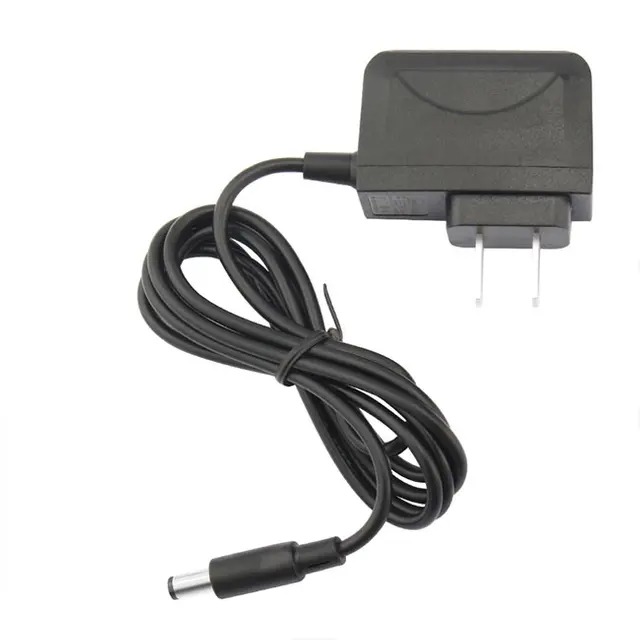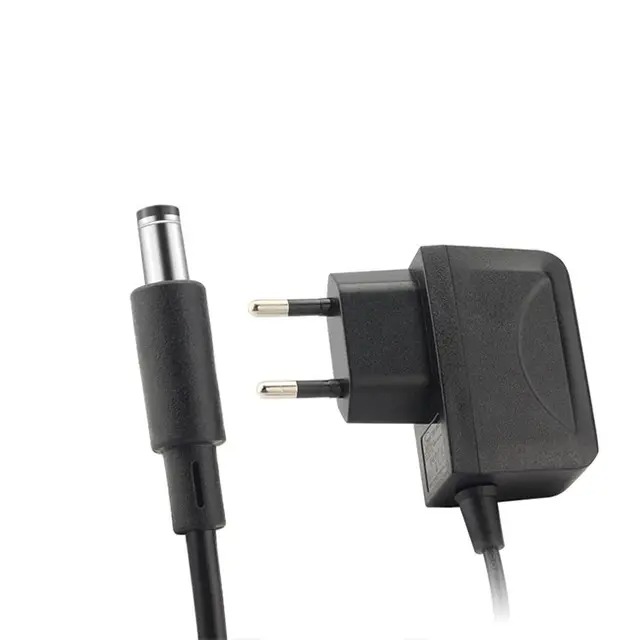Introduction
In the modern world of electronics, every device—from your smartphone charger to industrial automation systems—relies on a reliable source of power conversion. At the heart of this conversion lies the switching power adapter, a compact yet highly efficient device that transforms electrical energy into the precise voltage and current required by electronic equipment. Unlike older linear power supplies, switching power adapters offer enhanced efficiency, reduced heat generation, and smaller form factors, making them indispensable in both consumer and industrial applications. Understanding how these adapters function, their advantages, and their different classifications is key to selecting the right one for any power management need.
What Is a Switching Power Adapter?
A switching power adapter, often called a switch-mode power supply (SMPS), is an electronic device that converts electrical power efficiently by rapidly switching on and off a series of transistors. This process regulates and stabilizes output voltage and current while minimizing power loss. Instead of using a bulky transformer like traditional linear adapters, switching power adapters utilize high-frequency switching and smaller components to achieve greater efficiency and compact size.
At its core, the switching power adapter operates on the principle of pulse-width modulation (PWM). By controlling the duration of the “on” and “off” states of the switch, the adapter can finely regulate how much power is delivered to the load. This method allows the adapter to maintain a steady output despite fluctuations in input voltage or load conditions—an essential feature for sensitive electronics.

How a Switching Power Adapter Works
To understand the working principle of a switching power adapter, it helps to break down its key stages of power conversion. Below is a simplified sequence of operations:
| Stage | Function | Description |
| Input Rectification | Converts AC to DC | Incoming AC power is rectified and filtered into DC voltage. |
| High-Frequency Switching | Power regulation | A transistor switches on and off at high frequency (20–500 kHz), controlling power flow. |
| Transformer Conversion | Voltage scaling | A high-frequency transformer adjusts the voltage to desired output levels. |
| Rectification and Filtering | Produces clean DC output | The signal is rectified again and filtered to produce stable DC output. |
| Feedback Control | Maintains regulation | A feedback circuit monitors the output and adjusts the switching duty cycle to ensure consistent performance. |
The feedback loop is the most critical part of the design—it ensures that output voltage remains constant even when input voltage or load conditions vary. This is what gives switching power adapters their excellent stability and adaptability.
Types of Switching Power Adapters
Switching power adapters come in multiple designs, each suited for specific applications. Their classification depends on power rating, conversion topology, and functionality. Below are the main types:
| Type | Description | Common Applications |
| AC-DC Switching Adapter | Converts alternating current (AC) to direct current (DC). | Laptop chargers, routers, LED drivers. |
| DC-DC Converter | Converts one DC voltage to another. | Battery-powered devices, automotive electronics. |
| Isolated Adapter | Uses a transformer to isolate input and output. | Medical equipment, communication devices. |
| Non-Isolated Adapter | No galvanic isolation; more compact. | Embedded systems, low-voltage circuits. |
| Programmable Adapter | Output voltage/current can be adjusted via software or hardware control. | Industrial automation, laboratory instruments. |
Each type is engineered for efficiency and safety within its operational domain. For example, AC-DC switching power adapters are ubiquitous in consumer electronics, while isolated adapters are vital for preventing electric shocks in sensitive or high-risk environments.
Key Components and Their Functions
Every switching power adapter consists of critical electronic components working together harmoniously. Understanding their roles provides insight into the adapter’s overall performance.
Rectifier Diodes: Convert AC to DC current during the initial input stage.
Filter Capacitors: Smooth out voltage ripples for stable DC output.
Switching Transistors (MOSFETs): Act as high-speed switches to control energy flow.
Transformers: Step voltage up or down and provide isolation.
Optocouplers: Ensure safe feedback communication between high- and low-voltage circuits.
PWM Controller IC: Generates switching signals and manages the power regulation loop.
Output Inductors and Capacitors: Filter out high-frequency noise to deliver clean DC output.
Each component is optimized for efficiency, heat resistance, and safety compliance. The design intricacy of these adapters reflects the balance between performance, cost, and reliability.
Advantages of Switching Power Adapters Over Linear Power Supplies
The dominance of switching power adapters in the modern electronics industry stems from several key advantages over linear power supplies:
| Feature | Switching Power Adapter | Linear Power Supply |
| Efficiency | Typically 80–95% | Around 50–60% |
| Size and Weight | Compact and lightweight | Bulky due to large transformers |
| Heat Generation | Minimal | Significant heat output |
| Input Voltage Range | Wide (100–240V AC) | Narrow |
| Cost Efficiency | More economical for high power | Cheaper for very low power |
| Noise Performance | Requires filtering | Naturally low noise |
These advantages make switching power adapters ideal for energy-efficient designs, portable devices, and systems where space is limited. However, linear adapters are still used in scenarios requiring ultra-low noise, such as audio amplification or laboratory testing.

Common Applications of Switching Power Adapters
The versatility of switching power adapters allows them to power nearly every modern electronic device. Their applications range from small consumer gadgets to heavy-duty industrial systems. Some of the most common uses include:
Consumer Electronics: Smartphones, laptops, tablets, and smart home devices.
Networking Equipment: Routers, modems, and PoE systems.
LED Lighting Systems: Energy-efficient drivers for residential and commercial lighting.
Industrial Automation: Control systems and programmable logic controllers (PLCs).
Medical Equipment: Diagnostic devices that require precise, isolated power.
Automotive Systems: DC-DC converters for electric vehicles and infotainment systems.
By tailoring voltage, current, and form factor, manufacturers can design adapters that perfectly match the unique requirements of each application.
Energy Efficiency and Power Factor Considerations
Modern switching power adapters are designed not just for performance but also for environmental sustainability. Efficiency standards such as Energy Star, DOE Level VI, and ErP Directive mandate strict limits on power consumption and conversion losses.
To achieve these benchmarks, adapters integrate:
Power Factor Correction (PFC) circuits that improve current waveform alignment with voltage.
Synchronous rectification to reduce conduction losses.
Low-standby power designs consuming less than 0.1W in idle mode.
High-efficiency adapters not only conserve energy but also reduce heat, extending product lifespan and lowering operational costs. This is particularly crucial in large-scale deployments like data centers and smart home systems.
Safety, Standards, and Certification Requirements
Safety is a non-negotiable aspect of any switching power adapter. Since these devices handle high voltages and currents, they must meet rigorous international standards. The most common certifications include:
UL (Underwriters Laboratories) – Ensures compliance with North American safety standards.
CE (Conformité Européenne) – Required for sale in the European Economic Area.
FCC (Federal Communications Commission) – Limits electromagnetic interference.
RoHS (Restriction of Hazardous Substances) – Restricts use of harmful materials like lead or mercury.
IEC 62368-1 – Safety standard for audio/video, IT, and communication equipment.
Adapters that carry these marks have undergone extensive testing to ensure insulation integrity, thermal management, and electrical reliability.
Choosing the Right Switching Power Adapter
Selecting the correct switching power adapter requires careful consideration of multiple factors:
Input Voltage Range: Match with regional power standards (e.g., 100–240V AC for universal use).
Output Voltage and Current: Ensure the adapter meets or slightly exceeds the device’s rating.
Connector Type and Polarity: Confirm compatibility with the target device.
Efficiency Rating: Choose Energy Star or Level VI certified models for better performance.
Environmental Conditions: Consider temperature, humidity, and ingress protection (IP rating).
Safety Certifications: Always check compliance with regional or industry-specific standards.
Proper selection ensures reliability, safety, and long-term energy savings while preventing device malfunction or damage.
Conclusion
The switching power adapter represents a pivotal advancement in modern electronics, combining compact design, high efficiency, and universal compatibility. From personal gadgets to industrial systems, these adapters enable stable, efficient power conversion across a vast range of applications. Understanding their operation, advantages, and selection criteria empowers engineers, consumers, and businesses to make smarter decisions in an increasingly energy-conscious world.
FAQ
1. What is the main purpose of a switching power adapter?
It converts AC or DC electrical input into a stable, regulated DC output with high efficiency, suitable for powering electronic devices.
2. Why are switching power adapters more efficient than linear ones?
Because they use high-frequency switching transistors to minimize power loss, resulting in higher conversion efficiency and less heat.
3. Are switching power adapters safe to use?
Yes, when they meet certifications such as UL, CE, and FCC. These ensure the adapter is safe against overvoltage, overheating, and short circuits.
4. Can I use a higher-wattage switching power adapter on my device?
Yes, as long as the output voltage matches and the polarity is correct. The device will draw only the power it requires.
5. What is the lifespan of a switching power adapter?
Typically between 3–7 years, depending on usage conditions, load levels, and component quality.











